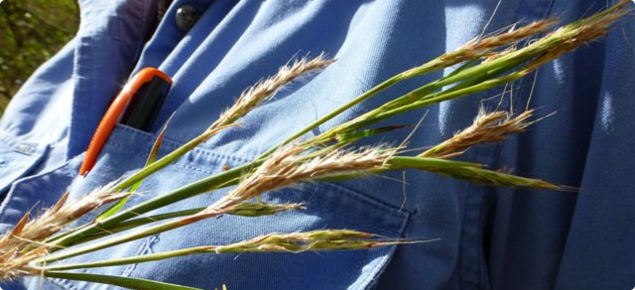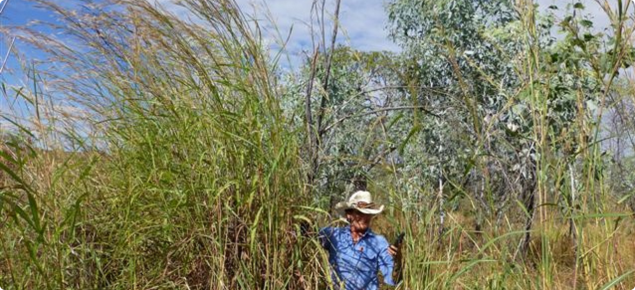Chemical requirements
When using any agricultural chemicals please ensure that you always follow instructions on the label and any permit. Users of agricultural chemical products must always strictly comply with the directions on the label and the conditions of any permit. To view permits or product labels go to the Australian Pesticides and Veterinary Medicines Authority website.
Physical
Small infestations or isolated gamba plants can be removed by hand pulling or grubbing out with a mattock or hoe. It is best to hand pull gamba grass after rain when the soil is moist. An advantage of manual control is that it minimises soil disturbance, and therefore further gamba seed germination. In the wet season it is very important that any gamba plants that are pulled out are not left in contact with the soil, as they will easily re-root (even after the dirt has been shaken off the plant).
Mechanical
Slashing or mowing gamba grass before it sets seed will reduce seed production and dry matter but will not kill the roots of the grass tussocks, which sprout again the following wet season. Care must be taken that gamba grass is slashed before it sets seed in April/May, as slashing after this time only encourages the spread of gamba, each plant producing up to 250 000 seeds. Regular slashing will encourage smaller, early seeding native grass species.
Chemical
Gamba grass is commonly controlled by chemical means using the herbicide glyphosate. This method is particularly good for large infestations, as a significant number of plants can be killed with a relatively small amount of herbicide and it is relatively cheap. However, care must be taken as glyphosate is a non-selective herbicide that will also kill susceptible native vegetation. Also, infestations around water should be sprayed with products that are safer to use around water. For example, Roundup Bioactive™. Herbicides containing the active fluazifop, flupropanate and metsulfuron methyl also have activity on other species of Andropogon.
For herbicide application to be successful you must make sure that the plants are actively growing and that the entire plant is covered with herbicide. If necessary a dye can be used in the spray so you can identify when herbicide has been applied to the entire plant. To reduce the amount of herbicide that you need you can spray at the beginning of the wet season, when the plants are actively re-sprouting but are still fairly small, or you can burn or slash the gamba grass, and then spray the re-sprouting grass.
Permits for use of glyphosate 540g/L @ 2.5L/ha in use in the NT.


